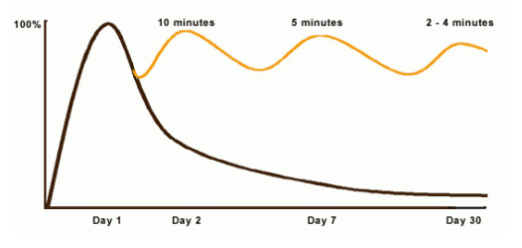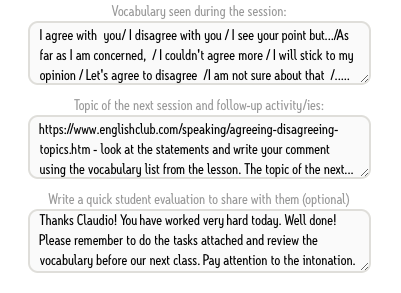“I knew this word but now I have forgotten it…”
“I know this word but I never use it…”
Sounds familiar? I bet you have all had students saying such things or students complaining about not making much progress. And I am sure you have noticed that their passive language skills are a lot stronger than their active speaking skills.
Apparently, our memory plays a huge role here. And we all know that ‘practice makes perfect’ AND Fluentify is all about practising the language. However, our conversations in order to be productive should follow some rules. And today I would like to focus on how our memory works so that having considered a few facts you can maximise the time spent with your students.

The graph comes from an interesting article published by the University of Waterloo that talks about remembering facts and analyses the curve of forgetting.
What does it mean in practical terms? For example, you may have had a very productive session with your student, during which you studied a lot of new vocabulary and by the end of the session student was familiar with all the vocabulary items. You said goodbye to your student and he or she booked a session with you for the following week. You left your feedback, the student had a quick look at it and then didn’t think about the new vocabulary for a week. What happened to the new vocabulary? The student most probably lost 90% of the words you introduced to him. So now back to square one…
How to avoid that? – REPETITION and REVISION are the key to success!
Here is a sample sequence of Fluentify sessions:
STEP 1:
Session 1 – 30 mins and about 15 vocabulary items introduced at the beginning of the lesson, practised in context during the session, quickly reviewed at the end of the session
Feedback – ask your student to review all the new vocabulary items (e.g. write short sentences, write a short summary of the lesson content) within 24 hours!
STEP 2:
Session 2 – 30 mins ideally booked after a few days. Encourage your students to do so! The introductory part of the session devoted to an active review of the vocabulary from session 1, followed by an introduction of new vocabulary or grammar.
Feedback – main focus on a new topic but a reminder of the vocabulary from the previous session.

STEP 3:
Session 3 – 30 mins booked more than a week after the first session – a very quick check of the vocabulary from session 1 (our student should have memorised about 80% of the new words and expressions), followed by an active review of the target language from session 2 and finally followed by an introduction of a new topic.
Try it out! It may not be a solution for everyone because we all have different learning styles but I am sure many of your students will appreciate this kind of approach and become your loyal Fluentify followers!

